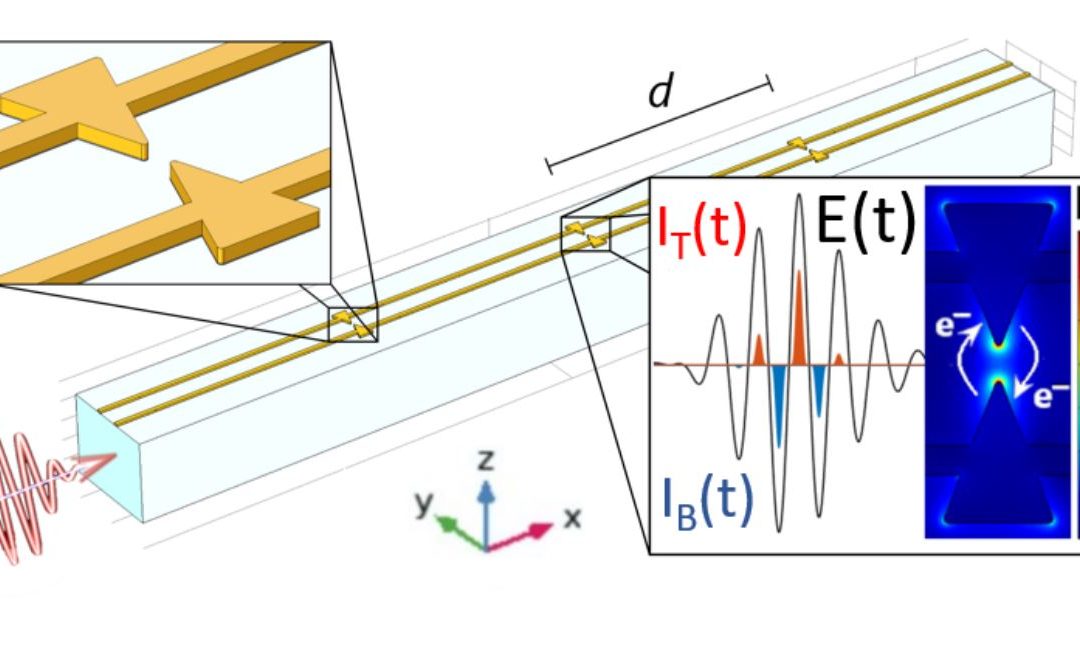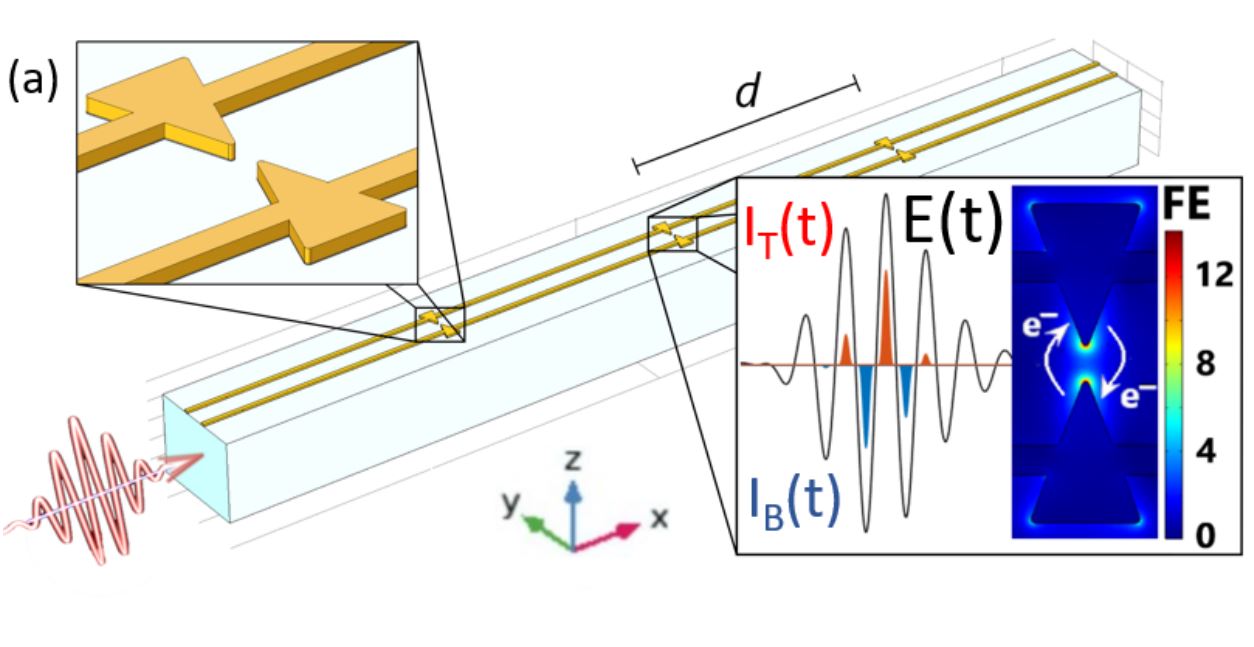Carrier-envelope phase (CEP) detection of ultrashort optical pulses and low-energy waveform field sampling have recently been demonstrated using direct time-domain methods that exploit optical-field photoemission from plasmonic nanoantennas. These devices are compact and integratable solid-state detectors operating at optical frequencies under ambient conditions using low pulse energies (picojoule-level). Potential applications include frequency-comb stabilization, optical time-domain spectroscopy, compact tools for attosecond science and metrology, and petahertz-scale information processing. However, to date these devices have been driven by free-space optical waveforms and their implementation within integrated photonic platforms has yet to be demonstrated. In this work, we design and simulate fully-integrated plasmonic nanoantennas coupled to a SiN-core waveguide for CEP detection. We find that when coupled to realistic on-chip, few-cycle supercontinuum sources, these devices are suitable for direct time-domain CEP detection within integrated photonic platforms. We estimate a signal-to-noise ratio of 30 dB at 50 kHz resolution bandwidth, and address technical details, such as the tuning of the nanoantennas plasmonic resonance, CEP slippage in the waveguide, optical losses, and sensitivity to driving pulse characteristics such as energy and duration. Our results provide the basis for future design and fabrication of time-domain CEP detectors and allow for the development of fully-integrated attosecond science applications, frequency-comb stabilization and light-wave-based PHz electronics.
A complete description of the work may be found here.

